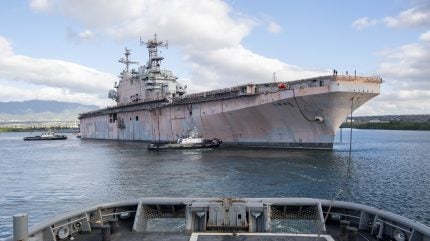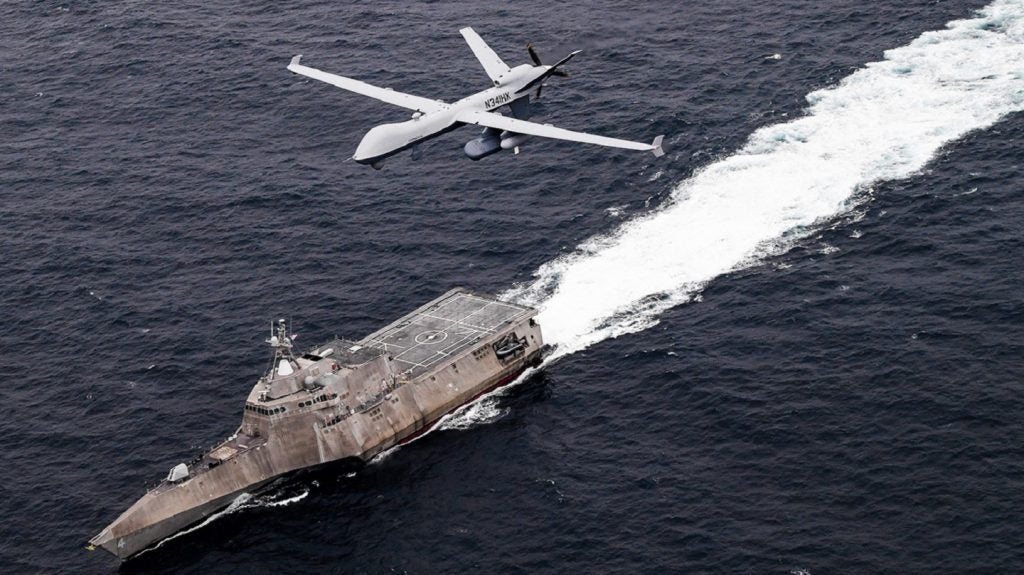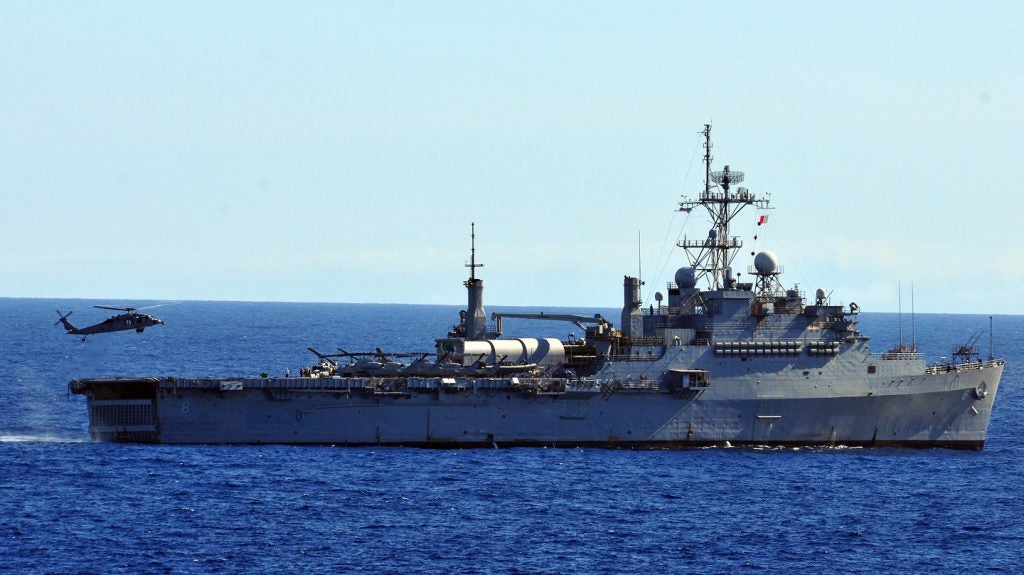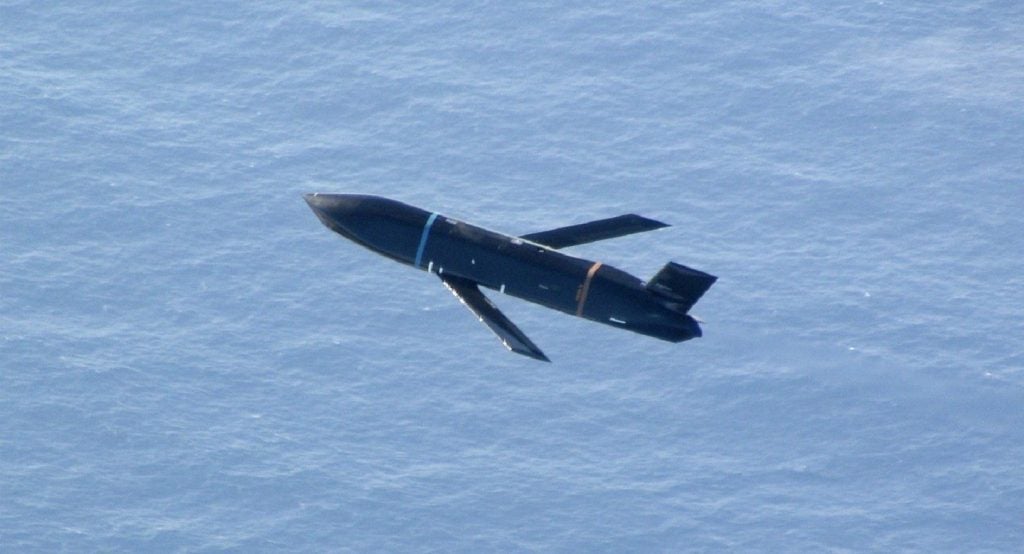
The US Navy’s former amphibious assault ship USS Tarawa slipped beneath the waves of the Pacific Ocean in mid-July, the victim of one of the more kinetic send-offs an old warship can receive – being the target of new-age weapons as part of a SINKEX.
Conducted as part of the Rim of the Pacific (RIMPAC) exercise in July 2024, the SINKEX of USS Tarawa saw the largest vessel to have been thus dispatched for a generation, with decommissioned frigates and similar-sized platforms the usual target of choice.

Discover B2B Marketing That Performs
Combine business intelligence and editorial excellence to reach engaged professionals across 36 leading media platforms.
Displacing 39,000 tonnes, the lead ship of the Tarawa-class amphibious assault ships required some of the newest weapons and sensors available to US and Allied forces in order to sink the vessel, including the Lockheed Martin Long Range Anti-Ship Missile (LRASM) and the SeaVue Multi-role Radar (SVMR).
New sensors, and crewed-uncrewed teaming
In addition, new operating concepts, including crewed-uncrewed teaming and the new of new drone-mounted sensors, were used to successfully identify and track the target, with data networked platforms able to share critical targetting information.
The key example of the combination of concepts and technologies came, as detailed in a 29 August release by RTX, with the use of the SVMR, fitted to a General Atomics MQ-9B SeaGuardian drone, to provide data and tracking information to a crewed US Navy F/A-18 Super Hornet, which successfully fired a Long-Range Anti-Ship Missile (LRASM) at USS Tarawa.

“The live-fire exercise enabled us to test and validate SVMR to ensure it can provide the situational awareness required in an operational environment – allowing faster decision making and more efficient kill chains,” said Bryan Rosselli, president of Advanced Products & Solutions at Raytheon, an RTX business.

US Tariffs are shifting - will you react or anticipate?
Don’t let policy changes catch you off guard. Stay proactive with real-time data and expert analysis.
By GlobalDataShips and missiles of SINKEX 2024
The USS Tarawa would not go down alone, being joined by the 10,000-tonne Austin-class amphibious platform dock USS Dubuque, representing nearly 50,000 tonnes of warships utilised in the exercise.
Both were sunk in waters 15,000ft deep, more than 50 nautical miles off the northern coast of the island of Kauai, part of the Hawaii archipelago, the US Navy stated in a 23 July release. The USS Dubuque was the first to be sank on 11 July, followed by USS Tarawa on 19 July.

During the SINKEXs, participating units from Australia, Malaysia, the Netherlands, the Republic of Korea, and the US Air Force, Army, and Navy. The Royal Australian Navy fired its first Naval Ship Missile (NSM) from the HMAS Sydney during the July SINKEXs, although it was not disclosed at which target the missile was targetted towards.
Lockheed Martin’s LRASM is currently deployed from US Navy F/A-18 and US Air Force B-1B aircraft, a next-generation air- and ship-launched anti-ship missile developed in the 2010s.

Production began in 2018, achieving early operating capability for the B-1B Lancer in the same year and for the F/A-18E/F in 2019, with 120 missiles currently under contract. The missile has a purported range of 200 nautical miles (370 km), although its official range is classified.
Stand-off cueing and strike: the future battle
The concept of utilising long endurance platforms such as the MQ-9B SeaGuardian, which is based on the MQ-9A Reaper produced by General Atomics, together with next-generation sensors to provide persistent tracking and targetting data to cued strike fighters or stand-off missile capabilities is likely to define naval warfare for the coming generation.
With the sinking of the USS Tarawa, the US will have gathered a significant amount of data in just how mature such operating concepts are becoming, should they need to be put into practice in a multipolar, contested world.
Additional reporting from John Hill.





